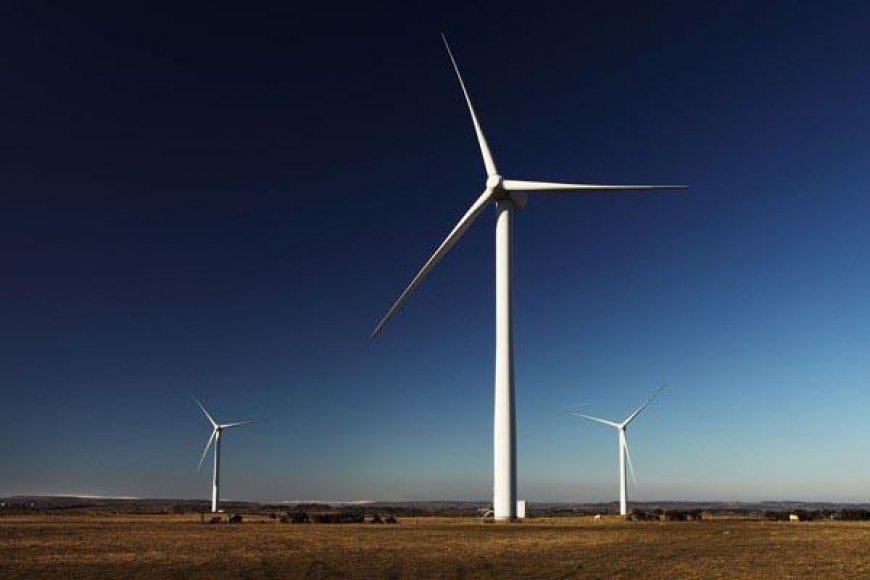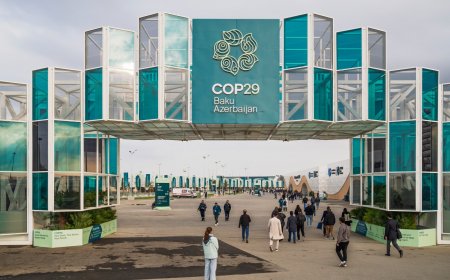Huge potential of wind power and its gap
Indonesia is currently only capable of using 147 megawatts of wind energy

JAKARTA — The 2050 net zero emissions target set by OECD countries is predicted to fail, writes Forbes senior contributor David Blackmon. He revealed that some of those countries had declared delays due to limited resources and capital. One of the consequences of this failure is the inhibition of the transformation of energy from fossil to renewable energy.
The Associated Press reported that wind power was one of the targets highlighted after it was named one of the renewable energies to be upgraded in the Committee of Parties (COP) 28 years ago. London-based energy consultancy Ember said Thursday (8/8/2024) that countries participating in COP 28 are committed to increasing their use of renewable electricity threefold by 2030. Wind power, in particular, is targeted to triple to achieve that, according to the International Energy Agency and other bodies.
By examining national targets set by 70 countries, covering 99% of existing wind power generation, Ember projects that in the next six years, wind power generation will double, not triple, compared to the baseline figure by 2022.
The report observed wind turbines both onshore and offshore. “The government is less ambitious towards wind power generation, and in particular onshore wind power generation,” said Katye Altieri, electricity analyst at Ember. “The wind doesn't get enough attention.”
The wind often blows strongest when the sun is not high in the sky. Thus, wind becomes a good complement to solar energy in an effort to generate net electricity 24 hours per day.
The report also measures countries' progress in achieving the goal to undertake the transformation of wind energy. America ranked worst, by a margin of 100 gigawatts, or enough to power more than 30 million homes. The targets used for the U.S. come from the National Renewable Energy Laboratory, part of the Department of Energy.The institution declined to comment when asked for confirmation by e-mail by the AP.

The second largest gap between national targets and wind power projects under construction occurs in India, at more than 30 gigawatts. Despite its considerable wind energy potential, only 4% of electricity in India comes from wind energy, Altieri said. Several officials at India's energy ministry did not reply to requests for comment from the AP when asked for confirmation by email.
The countries with the best ratings for wind development are Brazil and Finland, which are considered to be on the right track. This, to surpass their wind power generation targets of 15 and 11 Gigawatts respectively. The two countries were among the 10 countries that managed to surpass their goals. The AP noted that seven out of ten countries are in Europe, including Turkey.
Brian O'Callaghan, lead researcher at the Smith School of Enterprise and the Environment at the University of Oxford, UK, stressed if the key to wind development success was technology. Winds are rated stronger at altitude, so taller turbines can generate more electricity. The past two decades have seen dramatic technological improvements leading to taller turbines, especially offshore, he said.
In addition, wind speeds that can result in an eight-fold increase in power are also important. This means that there are great opportunities for countries that want to take advantage of it. 'Most coastal countries barely make use of their offshore wind resources, 'he said, while revealing, the UK being one prime example.
Some countries have strong winds but are just starting to build wind turbines. Altieri pointed to Russia, Japan, and South Korea in this category. Russia has the largest wind energy potential than any country, according to NREL, but Ember said Russia generates less than 1% of its electricity from wind energy by 2023.
John Reilly of the Massachusetts Institute of Technology, who studied energy policy and climate change for 45 years, said Russia was not committed to reducing greenhouse gas emissions. “The country has large amounts of natural gas and coal, so there is no real economic incentive for them to develop wind power,”he said.
Like many other island nations, Japan also has huge wind potential, but generates only 1% of its energy from wind, Altieri said. “The sea is very deep, just a little off the coast of Japan, so that makes it more difficult,” Reilly said. The country also has steep mountains, making it difficult to install turbin," he said.
Strict regulations in South Korea complicate the construction of wind turbines and public opinion has slowed construction further, he said. Around the world, there is frequent rejection of wind turbines.Japan's Ministry of Trade and Economy did not respond to emailed requests for comment. South Korea's Energy Agency could not be reached for comment.
More broadly, the collapse in solar power prices may help explain the lack of interest in wind power, Reilly said. “When many of these big commitments were made,” he said, “wind seemed like the least expensive renewable energy source.”
Although some countries are still lagging behind, the study's lead author, Altieri, said there are reasons to keep up the spirit of developing wind. “Europe is in good shape,” he said, and this is also the case because the North Sea, a tremendous wind resource, is barely being exploited.
He predicted Europe and China would continue to be the dominant players in the expansion of wind-fueled electricity.
What about Indonesia?
Wiloyo Kusdwiharto, General Chairman of the Indonesian Renewable Energy Society (METI) confirmed that the potential of wind energy in Indonesia is very abundant. He estimated that the potential is estimated at 155 gigawatts (GW). However, Indonesia is currently only able to use 147 megawatts (MW) of wind energy.
Wiluyo also revealed a number of challenges in the development of the Bayu/Wind Power Plant (PLTB). Among them, such as, the need for local skilled labor, the ability of local industry in producing PLTB spare parts, and infrastructure land that corresponds to the layout.
“With the advancement of renewable energy generation technologies today, in the future it may lower the production price of renewable energy plants. So that it can compete with plants that still use fossil energy”, Wiluyo revealed through METI's official website not long ago
He also underlined the importance of consistent policies and regulations as well as incentives from the government to accelerate the development of NPP in Indonesia. The Draft New Renewable Energy Act (EBT Bill) that is being drafted is expected to be a solution to overcome these obstacles.







